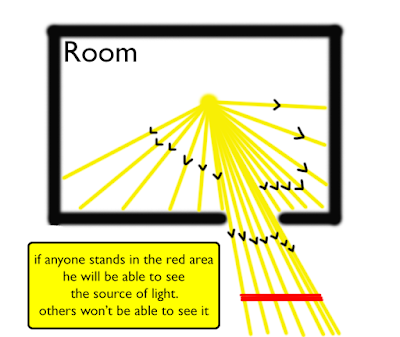Reflection of light
Suppose, we consider a plane surface. Now, this surface can be a part of any object and the object can be of three types:
- Opaque objects: maximum light rays are absorbed by the surface and partly are reflected back.
- Translucent objects: maximum light rays are absorbed and some light rays are transmitted and the rest are reflected back.
- Transparent objects: maximum light rays are transmitted and partly are absorbed and rest are reflected back.
Let's understand few terminologies:
- Incident ray: the light ray striking a reflecting surface is called incident ray.
- Point of incidence: the point at which the incident ray strikes the reflecting surface is called the point of incidence.
- Reflected ray: the light ray obtained after reflection from the surface in the same medium in which the incident ray is travelling is called the reflected ray.
- Normal: the perpendicular drawn to the surface at which the point of incidence is called the normal.
- Angle of incidence: The angle which the incident ray makes with the normal at the point of incidence is called the angle of incidence. it is denoted by the letter I
- Angle of reflection: The angle which the reflected ray mix with the normal at the point of incidence is called the angle of reflection it is denoted by the letter R.
- Plane of incidence: The plane containing the incident ray and the normal is called the plane of incidence
- Plane of reflection: The plane containing the reflected ray and the normal is called the plane of reflection.
- Real image: The image which can be obtained on a screen is called a real image it is formed when the light rays after reflection actually intersect.
- Virtual image: The image which cannot be obtained on a screen is called virtual image it is formed when the light rays after reflection do not actually intersect but they appear to diverge from the image geometrically they will intersect when they are produced backwards.
Now, let's learn the laws of reflection. All the reflection that undergo in this world follow the laws.
They are:
- The angle of incidence is equal to the angle of reflection
- The incident ray the reflected ray and the normal at the point of incidence lie on the same plane.
The answer to this question lies in the fact that surfaces are of two types:
- smooth surface or polished surface
- rough surface
We observe in the figure that as the surface is a straight line, so all the normal lines drawn at the point of incidence are parallel and therefore the reflected rays are also parallel to each other as you can see in the figure above.
Under what condition do we see our image on a smooth surface?
👉 We see our image when the light rays from a source fall on a smooth surface. On such surfaces, when maximum amount of light rays undergo uniform reflections, our image can be seen the surface as there will be clear formation of the image. And on irregular surfaces due to non uniform reflections.
Now a question arises in our mind. How can we actually see an object?
Can we see an object through a wall?
No...!!!
But why man? why can't we?
It's because the the wall is opaque. But yes, we can see an object through a wall if it is made up of glass which is transparent. And you have read what is a transparent object above.. right?
Let's learn about it in detail.
We see an object when the light rays after getting reflected back from it reaches our eyes. We will not be able to see the object unless the reflected rays reach our eye. Let's observe the illustration in the figure below.
So, we learnt when can an object be seen. Now we will be discussing about the formation of image for a point object kept in front of a plane mirror. We will also discuss about the properties of the image so formed.
Image of a point object:
Steps to draw an image of a point object kept in front of a plane mirror:
- We should draw at least two incident rays from the object which will strike on the plane mirror as shown in the figure.
- At the point of incidence, draw the Normal line. [ we need to draw an angle equal to 90° with the mirror surface.]
- After the normal line is drawn, measure the angle between incident ray and normal and note it down. It is the angle of incidence.
- From the laws of reflection, we know that angle of incidence is equal to the angle of reflection. So, draw an angle equal to the angle of incidence on the right side of normal line. This ray is the reflected ray. We have to do this for both the rays.
- Now, as both the reflected rays are drawn, we can see that the rays after reflection are diverging from each other.
- The light rays actually meet after reflection and therefore the reflected rays should be convergent in nature. This type of image is called Real image.
- The light rays diverge after reflection. As in case we are discussing now. So, they seen to be coming from a point which is inside the mirror. But we know that the light rays are actually coming from a point outside the mirror right? from the object.. What we see inside the mirror is the image. This type of image is called Virtual image.











No comments